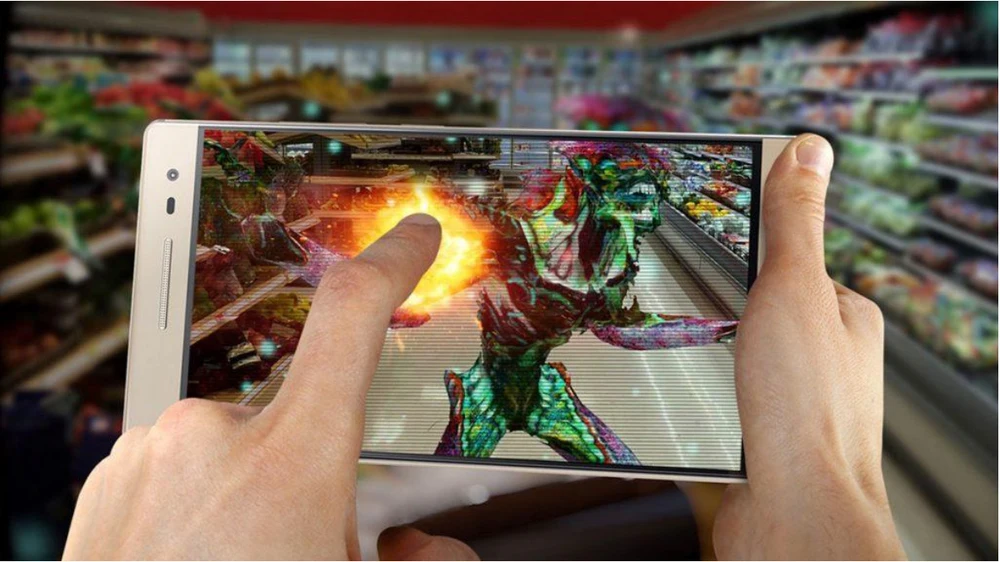The popularity of online gaming has been rising consistently for years. And the tendency has only gotten more vital as the social advantages of video games have come to light. The gaming business has surpassed both the movie and sports industries in size. The scale of the gaming industry has exceeded that of the film and sports sectors. In 2022, the gaming sector brought in $185.6 billion; by 2025, there will be 4.2 billion gamers globally. And it’s not just kids—39.42% of gamers are between 18 and 34, and 16% are above 55.
Gaming will continue to gain cultural traction. But how will new technological advancements affect the gaming experience, and how will they shape the future of video games?
Numerous reasons have contributed to the online gaming sector’s explosive growth, making it one of the world’s biggest and most lucrative industries. One of them is the noticeable increase in digitization, which the general growth of digital infrastructure has supported. It has especially captured the imagination of an enthusiastic, youthful audience with more discretionary cash and access to more inexpensive cell phones and Internet connections.
The gaming industry is on the verge of another seismic change as game creators keep pushing the envelope to provide players with experiences that are more immersive and difficult. Since 5G-enabled mobile devices offer minimal latency, high-quality visuals, and high frames-per-second gameplay from almost anywhere, its arrival is anticipated to be a game-changer.
The need for complex mobile games is rising along with the popularity of mobile gaming. Now, gamers want more powerful hardware with more storage and quicker download and update times. Fortunately, these issues may be solved by using cloud-based gaming services.
By enabling cutting-edge technologies like augmented reality (AR) and virtual reality (VR) to seamlessly incorporate into games, 5G technology is also anticipated to provide game creators a significant boost. While augmented reality (AR) duplicates artificial items in the real world, virtual reality (VR) allows users to submerge themselves in synthetic settings fully. These technologies are poised to become more widely used in the online gaming sector as developers and businesses are looking to meet the growing need for greater involvement in the websites like boostroyal.com.
With cloud gaming, players may access new games wherever they are as long as their internet connection is steady. Introducing 5G technology will speed up the time to market for these games by lowering the time required to purchase new games. In addition, moving storage, power use, and processing power from PCs to the edge cloud will be made possible by ultra-low latency and ultra-fast throughput speeds, enabling greater accessibility. Enabling remote access to game material and eliminating the need for pricey, high-end gear will ultimately revolutionize the gaming and entertainment industries.
Because they encourage interpersonal relationships, encourage online socialization and aid in forming friendships, multiplayer games are getting increasingly popular in India. Multiplayer gaming experiences across several devices are anticipated to become even more exciting and dynamic as 5G networks, with their high bandwidth and low latency capabilities, become more widely used. Major gaming studios and developers also invest a lot of money in R&D facilities, encouraging technical advancement in the sector. With these developments, gamers can now take advantage of quicker downloads of more giant games, flawless synchronization of game states across several players, and real-time changes to reduce network congestion, all of which contribute to a highly immersive gaming experience across various game genres.
Virtual Reality

Virtual reality (VR), which players access through headsets, has long tantalized players with the promise of an immersive experience. However, the technology has taken a while to fulfill that promise. Ben Kuchera of Polygon stated it succinctly 2020: “VR has been five minutes away from some kind of breakthrough for about eight years.”
Compared to the rest of the game business, VR is still a niche area, as seen by sales and manufacturing: In 2022, there was a 12 percent decline in global exports of VR and AR equipment. And even now, despite all the hoopla, it still causes some buyers to hesitate.
According to VR game creator Kevin Mack, “Right now, we’re sort of in this trough of disillusionment about VR.”. It received a lot of buzz in 2015 and 2016. However, after that, everyone was disappointed when their first-generation VR headset failed to transform into the Holodeck.
Despite a few roadblocks along the way, tech and gaming businesses are hard at work attempting to progress the industry by spending a lot of money on creating VR technology and games. Over the past few years, businesses like Meta, Valve, PlayStation, and Samsung have all entered the VR market. Even Apple is said to be working on a VR/AR system, despite delays and problems. This investing pattern is likely to continue, with the VR game industry projected to grow 30.5 percent by 2028.
Augmented Reality

In 2016, augmented reality (AR), a gaming technology that overlays digital visuals in the natural environment, generally using smartphones or special glasses, made a significant splash in the gaming industry.
When Pokémon Go, an augmented reality mobile game in which virtual objects—in this case, colorful creatures called Pokémon—overlay a person’s natural range of view, parks, and plazas crowded with smartphone users playing the game. One of the most important success stories for AR, the game was most people’s introduction to the technology and has produced almost $1 billion in sales annually since its release.
However, the adored intellectual property of Pokémon Go is only a tiny component of the game’s overall success. People may spend time with Ash Ketchum and Pikachu in games, novels, and movies. The game’s secret ingredient is the interaction between virtual characters and real-world locales.
Incorporation of AI
To make games more responsive, adaptable, and challenging, developers use artificial intelligence (AI). AI is used in games to improve environmental circumstances, non-player characters, interactive storytelling, intelligent characters, pathfinding, and decision-making. By using AI, game developers and studios may get insightful knowledge about player behavior and preferences, improving their understanding of the most engaging elements of the game.
NFTs, blockchain, and Web 3 technologies are also essential to gaming development and AI. With the help of these technologies, the immersive gaming experience is being improved, and the industry is becoming more innovative.
Conclusion
The gaming industry is primed for a good start as we move forward, and a clear regulatory framework might be essential in enhancing players’ opinions of skill-based online gaming. Game designers can create unique and fascinating gaming experiences for gamers by utilizing cutting-edge technologies. It is expected an even more fascinating and enthralling online gaming scene in the years to come with continuing governmental support and the growth of upcoming technical breakthroughs.












